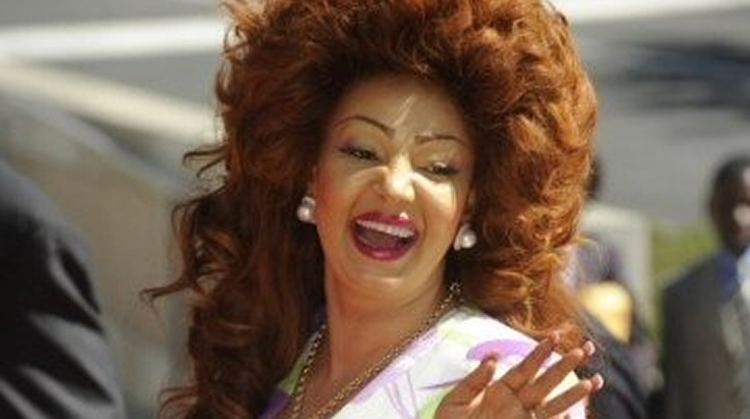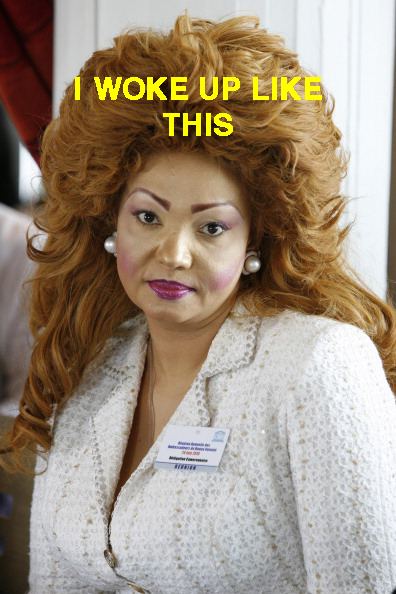Occupation First lady Name Chantal Biya | ||
Children Paul Biya Jr., Anastasia Brenda Biya Eyenga Parents Georges Vigouroux, Rosette Ndongo Mengolo Similar People Paul Biya, Jeanne‑Irene Biya, Sylvia Bongo Ondimba, Ahmadou Ahidjo, Ana Paula dos Santos | ||
Cameroon first lady seen angry on 2018 election day
Chantal Biya (née Chantal Pulchérie Vigouroux) is the First Lady of Cameroon.
Contents
- Cameroon first lady seen angry on 2018 election day
- Chantal biya en image mbamba essae
- Early life
- Personal life
- Philanthropy
- Bertrand Teyou
- References

Chantal biya en image mbamba essae
Early life

Chantal Biya was born in Dimako, East Province, Cameroon. Her father was French expatriate Georges Vigouroux and her mother, Miss Doumé pageant winner Rosette Ndongo Mengolo. Her mother was elected Mayor of Bangou following the July 2007 municipal elections.
She spent her adolescence in Yaoundé.
Personal life

She married President Paul Biya on 23 April 1994, after his first wife, Jeanne-Irène Biya, died in 1992.
She is well known for her hairstyles. Her signature style is called the banane, and is used for formal occasions. Biya has popularised other styles; collectively, they are known as the Chantal Biya. She is also known because of her exotic wardrobe. Among her favourite designers are high-end Western labels such as Chanel and Dior.
Philanthropy
She established the Fondation Chantal Biya in 1994, and hosted the inaugural First Ladies Summit in Yaoundé in 1996; the Jeunesse active pour Chantal Biya is an organ of her husband's Cameroon People's Democratic Movement.
Bertrand Teyou
In November 2010, Bertrand Teyou published a book titled La belle de la république bananière : Chantal Biya, de la rue au palais (English: "The belle of the banana republic: Chantal Biya, from the streets to the palace"), tracing Biya's rise from humble origins to become First Lady. He was subsequently given a two-year prison term on charges of "insult to character" and organising an "illegal demonstration" for attempting to hold a public reading. Amnesty International and PEN International’s Writers in Prison Committee both protested his arrest and issued appeals on his behalf; Amnesty International also named him a prisoner of conscience. He was freed in April 2011 when a well wisher agreed to pay his fine in order that he might seek treatment for his worsening health.
